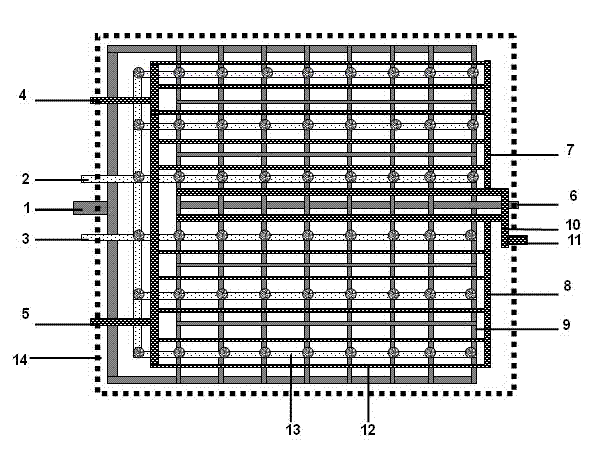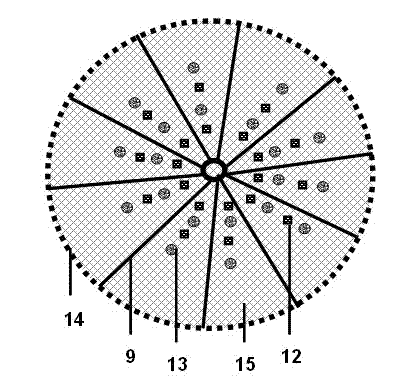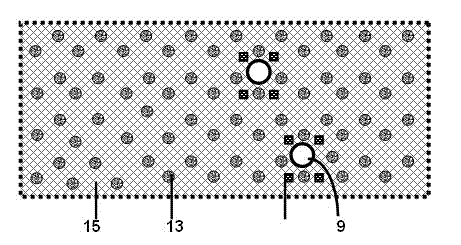Hepatic lobule-like bioreactor
一种生物反应器、肝小叶的技术,应用在人工肝用类肝小叶生物反应器领域,能够解决物质交换效率不高、缺乏胆汁排出系统、装置结构设计及效果未达到理想的程度等问题,达到有利于代谢物质的传递、生物相容性好、良好传质功能的效果
- Summary
- Abstract
- Description
- Claims
- Application Information
AI Technical Summary
Problems solved by technology
Method used
Image
Examples
Embodiment Construction
[0026] Such as Figure 1 to Figure 3 As shown, the hepatic lobule-like bioreactor of the present invention has a closed shell 14, and a nanofiber scaffold network 15 is arranged inside the shell 14. Intrahepatic fibrous vascular network 9, capillary biliary network 12, upper hepatic bile duct 7, lower hepatic bile duct 8, common bile duct 10, and hepatocyte collagen fiber microchannel 13 are distributed in the entire nanofiber scaffold network 15, and capillary biliary network 12 is distributed in the Around the collagen fiber microchannels of hepatocytes 13 . Wherein, the upper hepatic bile duct 7 and the lower hepatic bile duct 8 communicate through the common bile duct 10; the capillary bile duct in the capillary bile duct network 12 is provided with more than two capillary bile duct epithelial cell entrances; Entrance 2, 3. In the present invention, there may be three or more inlets for capillary bile duct epithelial cells and liver cell inlets. The intrahepatic fibrova...
PUM
 Login to View More
Login to View More Abstract
Description
Claims
Application Information
 Login to View More
Login to View More - R&D
- Intellectual Property
- Life Sciences
- Materials
- Tech Scout
- Unparalleled Data Quality
- Higher Quality Content
- 60% Fewer Hallucinations
Browse by: Latest US Patents, China's latest patents, Technical Efficacy Thesaurus, Application Domain, Technology Topic, Popular Technical Reports.
© 2025 PatSnap. All rights reserved.Legal|Privacy policy|Modern Slavery Act Transparency Statement|Sitemap|About US| Contact US: help@patsnap.com



